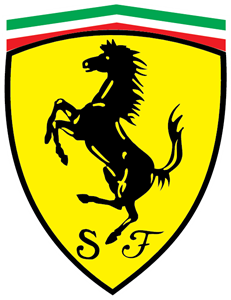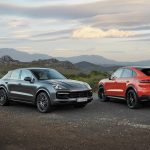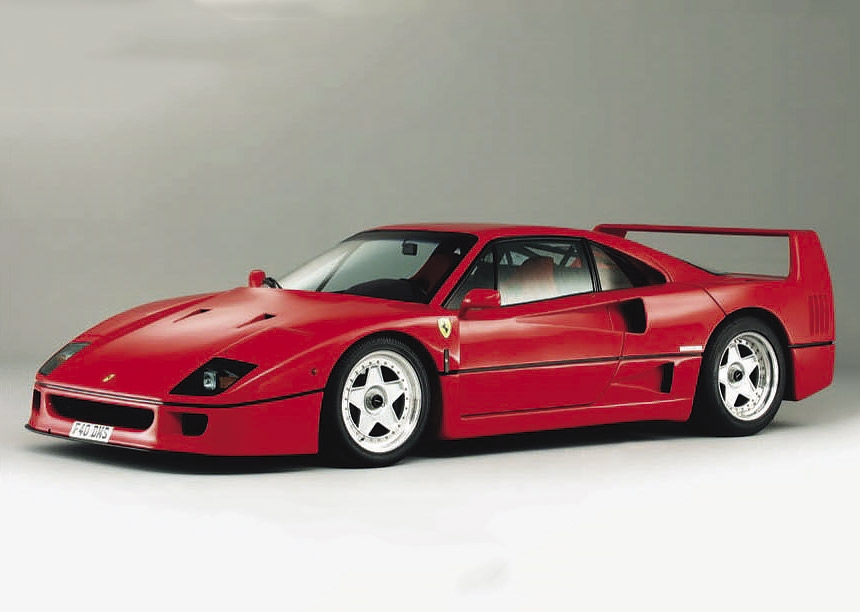
Extreme machine… Three decades of Ferrari’s racer for the road, the F40. The brutal Ferrari F40 still generates excitement like few other supercars. James Page explores its timeless appeal… Photography James Mann/Archivio Pininfarina & M Cavazzuti/Ferrari SPA.
FORZA F40 Ferrari’s ultimate supercar: the full inside story PLUS its racing laurels. Enzo’s 200mph epitaph 104 Thirty years on, Il Commendatore’s final project is as awesome as ever…
ROARING 40 HITS 30!
Nothing makes an entrance like an F40. Low, wide and impossibly aggressive, it draws a crowd even while being unloaded from the transporter. Phones are hurriedly pointed in its direction to record it being manoeuvred around an industrial estate, the restless growl of its V8 contrasting sharply with the computer-controlled melodrama of modern prima donnas.
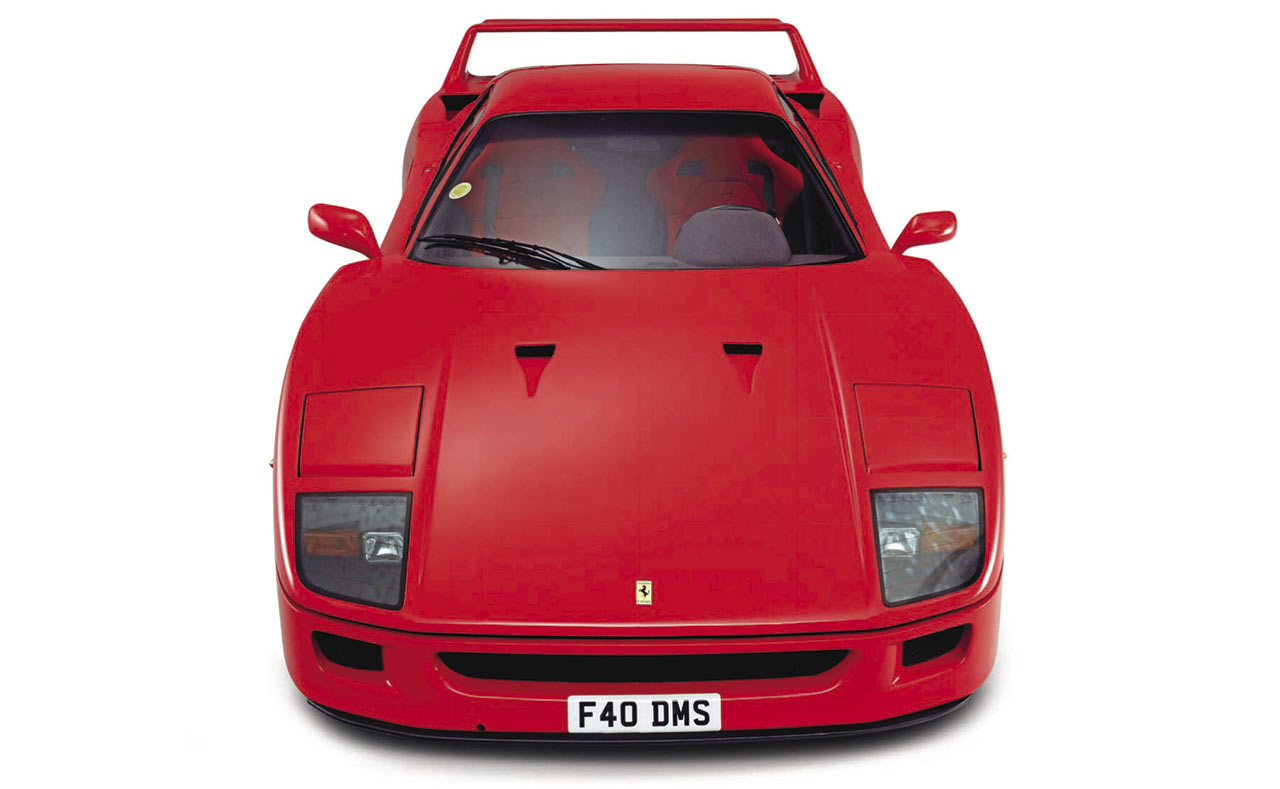
This is the poster car for a generation of enthusiasts, a shape that adorned bedroom walls as their imaginations were fired by articles describing the Ferrari’s stripped-back focus, its immense value, its savage performance. Legend has it that the F40 could lap Fiorano faster than the Scuderia’s (dreadful) 1980 Grand Prix car, while Formula One star Gerhard Berger described driving one and almost being caught out by wheelspin. In fourth gear. At 120mph.
A logical follow-on from the Ferrari 288GTO – it was based upon the Evoluzione, of which five were made – the Ferrari F40 was named for the marque’s 40th anniversary and was the last Ferrari to be launched while Enzo was still alive. It featured a development of the 288’s twin-turbocharged 90º V8 power unit, which was enlarged from 2855cc to 2936cc. The compression ratio was raised, too, as was the boost – from 0.8 to 1.1 bar. There were twin injectors for each cylinder, and power was up to 478bhp from 400bhp.
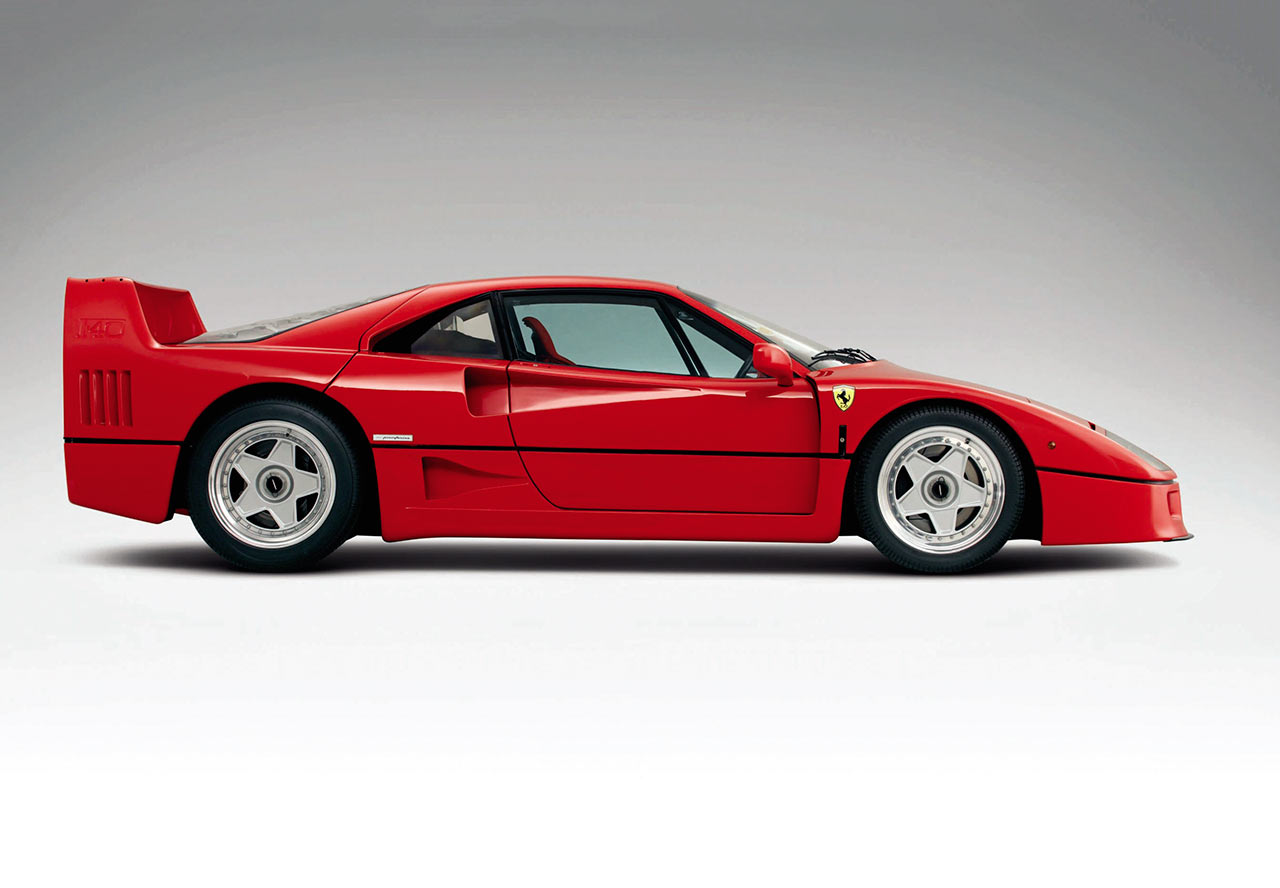
Chief test driver Dario Benuzzi began his career at Ferrari in 1971. He was responsible for developing a long line of road cars, and today he recalls the F40 project: “Like it was yesterday!” “One of the biggest challenges was the engine drivability,” Benuzzi explains. “It was a Weber- Marelli electronic injection system with IHI turbos, and early versions were undrivable. The Weber engineer would come over to Maranello and we’d test the car. Then he would go back to Bologna, reconfigure the EPROM [erasable programmable read-only memory] and it went on like that for a long time.
“We’d test the engine on the track at Fiorano but also out on the road, using a favourite route to Fanano in the mountains south of Maranello.
For acceleration and braking tests, we’d go tom the aeronautical base in Rimini.”
The use of IHI turbochargers came despite the fact that the 288GTO had employed KKK units – as did the Formula One team at that time: “We tried both makes, obviously, and for me the best solution was the IHIs. But with the F1 connection, it wasn’t an automatic choice. The engineers, Materassi and Bellei, said we’d have to go to the Commendatore. So we did, and he said to me, ‘You’re the one who has to drive the car – which do you prefer?’ When I told him, he said to talk to his son, Piero, and inform KKK.
“We prepared two prototypes, one with KKK turbos and the other with IHIs, and we invited the KKK engineers to test both at Fiorano. They agreed that the IHIs were better and went off to work on an improvement to their turbos. But we went with IHI anyway.”
The other problem that Benuzzi had was settling on the right choice of tyre: “The Pirelli P Zero was created specifically for the F40. I remember trying out an infinite number of different specifications before we found the right compound and tread design. Ing Mezzanotte was the engineer in charge of development for Pirelli and I remember him with a rasp, filing down the rear tyres because they were moving too much!
“The last aspect was the floating disc brakes. We had a lot of vibrations and tried a lot of different hubs before resolving the issue. We also had to find a good compromise between braking efficiency and pedal effort – there was no servo.”
High-speed testing was carried out at Nardo: “The only issue we had was that there was a rearward bias to the aero balance, so it lifted a bit at speed. In fact, the early versions had quite a pronounced rear nolder [lip], so we took a file to it. I remember seeing 391kph (244mph) with the LM version around Nardo.”
Benuzzi reports that the F40 was always intended to be a racing car. Creature comforts were therefore the last thing on the minds of those involved, something that’s immediately apparent when you first get inside. Air-con is included only as a necessity to combat the intense heat generated by the engine. Everything else – carpets, door trim, doorhandles, a radio – was ditched in an attempt to save weight.
At the launch in July 1987, Enzo himself stated: “I expressed a wish that we produce a car which could remind us of Le Mans and the GTO.”
Pininfarina’s Leonardo Fioravanti was in charge of the styling. “In the 1960s, it was possible for the private driver to buy a car that was very similar to the racing cars,” he said at that same launch event. “What we have done with the F40 is to build a machine which pays little respect to the limitations of modern times…
This car, for us, has a special meaning. This world has too many computers, too much technology and here we have recovered the design of a car as an emotion, just as in the old days. It is not nostalgia, but we prove that even today it is possible to make a car with a human approach.”
At the time, there were those who considered the spartan F40 to be something of an anachronism, thanks mostly to the recent introduction of the 959 – Porsche’s technological tour de force. Certainly the Italian car’s whole ethos couldn’t have been further removed from that of its Weissach rival. As Roger Bell wrote in Car, they shared common ground ‘only in what they do, not how they do it. The Porsche is by far the safer, more forgiving machine, the Ferrari emphatically the more demanding and exciting’.
Respected road-tester Mel Nichols was working for Autocar at that time. “The Porsche had a broader performance envelope,” he recalls, “and I remember thinking that the 959 was more significant as a general advancement of the motor car. The Ferrari was much more specialised, more of a weekend toy. I don’t separate the 959 and F40 as landmarks – I see them together. They’re inextricably linked. The 959 introduced us to that new level of performance, and the F40 was another car in that realm.”
Nichols reckons that he was possibly the first journalist to get into an F40. “There was going to be a big anniversary event at Imola in 1987,” he recalls, “and we’d got word that they were going to take the F40. I flew to Modena with a photographer on a Friday and waited all day at Maranello. They said that the car was out testing, and that they might let us have a look and maybe a sit in it – but not drive it.
“It didn’t get back until after 6pm, so we went back on the Saturday and, at mid-morning, got a number of laps at Fiorano alongside the test driver. I then rode in it down to Imola.
“We went back to Fiorano the following May to drive it. In late 1987, I’d spent two days in Germany with a 959, so I knew how good that car was in all conditions. The Ferrari had a much more raw appeal. We were thinking, ‘Okay, it’s the fastest-ever Ferrari, twin-turbo V8’ – it had the potential to be frightening. You could get into tune with it, though, and it wasn’t vicious – but that was on a track. Maybe if you covered more miles in different conditions, it would get tricky, although I didn’t feel that.
“Compared to today’s turbos, the F40 had that ‘on-off ’ aspect. Below 3000rpm it didn’t do a lot, then it took off. At lower speeds there’d be a touch of understeer, but, as the speed built in a frantic rush, this transformation happened. It would go very swiftly from mild understeer to full-on oversteer. The great thing was that you could feel it all – once you had confidence in it, you could balance the attitude as you wished.” Writing in Autosport in July ’88, Pierre Dieudonné agreed: ‘Inside, you feel the proud tamer of a wild animal. In fact, it’s extremely docile… as soon as the car begins to break away, grip can be regained with ease.’ It should perhaps be remembered that Nichols was hugely experienced in terms of driving fast cars and Dieudonné was a fine racing driver, but their remarks resonate with the owner of our featured F40.
“It was easier to drive than I expected,” reports Peter Bullard of his first acquaintance with the Ferrari. “The cabin was noisier, though, and the general drama and silliness is in line with what you would imagine. The clutch is heavy, the gearbox is heavy, the steering is heavy, but it’s easy to get into driving it. It’s more difficult to drive it quickly, though. There is no safety net – an average driver could easily find themselves a bit behind the curve.”
Bullard bought the car in August 2004, at which point he was living in Singapore. Although he admits that he “couldn’t imagine owning an F40”, he was looking at Ferraris. A friend of his ran a dealership in the UK and had a 512TR, plus the F40. There was only ever going to be one winner: “It was my first Ferrari and I hadn’t even seen it, never mind driven it.”
Once Bullard had returned from the Far East, he set about making up for lost time: “I remember sitting at home when I got an e-mail from the Ferrari Owners’ Club saying that they had free space at a Silverstone track day. I didn’t know Silverstone that well and I’m not much of a driver, but it was nice to stretch its legs. The problem with doing track days with an F40 is that you become a target for everyone else!
“On the way home, though, it was a beautiful summer’s afternoon, the road was quiet and it all just came together. It was one of those occasions when, if there was someone to overtake, there was never anything coming the other way. If you keep it on the edge of the turbo in third and fourth, that’s plenty.
“In those intermediate gears, the noise is fantastic. You get into this fantasy world – it makes you feel as if you’re on a slowing-down lap at Le Mans. That was the beginning of my real bond with it – with some cars, you can just build a relationship with them.
“I’ve averaged about 1000km a year and it has an annual service, but in general they’re well-made and reliable. I’ve got the three-piece luggage set that includes a tan leather case that goes in the front wheel well. I’ve no idea why, because you wouldn’t go touring in an F40. The headlamps aren’t great and it mists up in the rain.
And unless it’s the middle of winter, you’ll be calling for help if the air-con stops working. It gets so hot in there. I put it away for a couple of months every winter and I think that maybe I should sell it. Then I get it out again in the spring and forget all about that.”
Thirty years since the F40’s launch, and 25 since production stopped, its legend has continued to grow. “It was really a statement for Enzo and for the anniversary,” concludes Nichols. “The engineers approached it with real passion and a purity of mission.”
“It was a lightweight car with a lot of power and that’s what makes it fun to drive,” says Benuzzi. “And the work we did with Weber on the drivability really made a huge difference. Of course, the handling was also very good. So, all in all, a very good package! I think that, if we’d been able to adopt a steering and brake servo, the F40 would still be a force to be reckoned with among supercars today.”
The Ferrari’s headline figures – 478bhp, 0-100mph in 8.3 seconds, 201mph – have long since been eclipsed by later generations of supercar. But this is not a machine to measure by statistics. They give no impression of how it feels, how visceral the driving experience is, how it oozes malevolent charisma from every pore. In returning to its roots and placing pure emotion at the core of the F40, Ferrari created the greatest supercar of all time.
Thanks to Jason Harris and Joanne Marshall at Ferrari, Mark Hawkins, Peter Bullard
Market view
Ferrari launched the F40 at the height of the speculators’ market of the 1980s, and intended to make only 400 of them. Once it had realised it was onto a good thing, that figure crept up to more than 1300. They were all red – although some have since been resprayed a different colour – and all apart from two cars ordered by the Sultan of Brunei were left-hookers.
“F40s were at £300-350,000 for quite a few years,” says Mark Hawkins of Ferrari specialist Rardley Motors (www.rardleymotors.com), “then three or four years ago they jumped to £500-600,000. You do hear of cars going for £1million, but those tend to be 2000-mile, one-owner examples that come out of the woodwork. If you eliminate extremes such as that, most cars are now £600-700,000.”
There are three basic types of roadgoing F40 – those with neither catalytic converters nor adjustable suspension, those with cats and non-adjustable suspension, and those with cats and adjustable suspension. Each variant has its supporters, Hawkins reports, with other factors being more important. “Mileage plays its part,” he explains. “Most of the ones that we’ve sold have been between 6000 and 50,000 miles.
But it’s better to have a 50,000-mile car with an immaculate service record than it is to have a 25,000-miler with sketchy history. Originality, condition and a verifiable past are all vital.”
TECHNICAL DATA FILE SPECIFICATIONS FERRARI F40
Sold/number built 1987-’1992/1315
Construction tubular steel chassis with bonded composite tub, Kevlar body panels
Engine all-alloy, dohc-per-bank 2936cc 90º V8, twin IHI turbochargers, Weber-Marelli electronic fuel injection
Transmission five-speed manual transaxle, driving rear wheels
Suspension independent, by wishbones, coil springs and telescopics; anti-roll bar f/r
Brakes ventilated discs
Steering rack and pinion
Length 14ft 6 ½ in (4430mm)
Width 6ft 6in (1981mm)
Height 3ft 8in (1117mm)
Wheelbase 8ft ½ in (2450mm)
Weight 1100kg (2425lb)
0-60mph 4.2 secs
Top speed 201mph
Mpg 10
Price new £160,000
Now £600-800,000
{module Ferrari F40}
“THE PROBLEM WITH DOING TRACK DAYS WITH AN F40 IS THAT YOU BECOME A TARGET FOR EVERYONE ELSE!”
‘LEGEND HAS IT THAT IT COULD LAP FIORANO QUICKER THAN THE 1980 GRAND PRIX CAR’
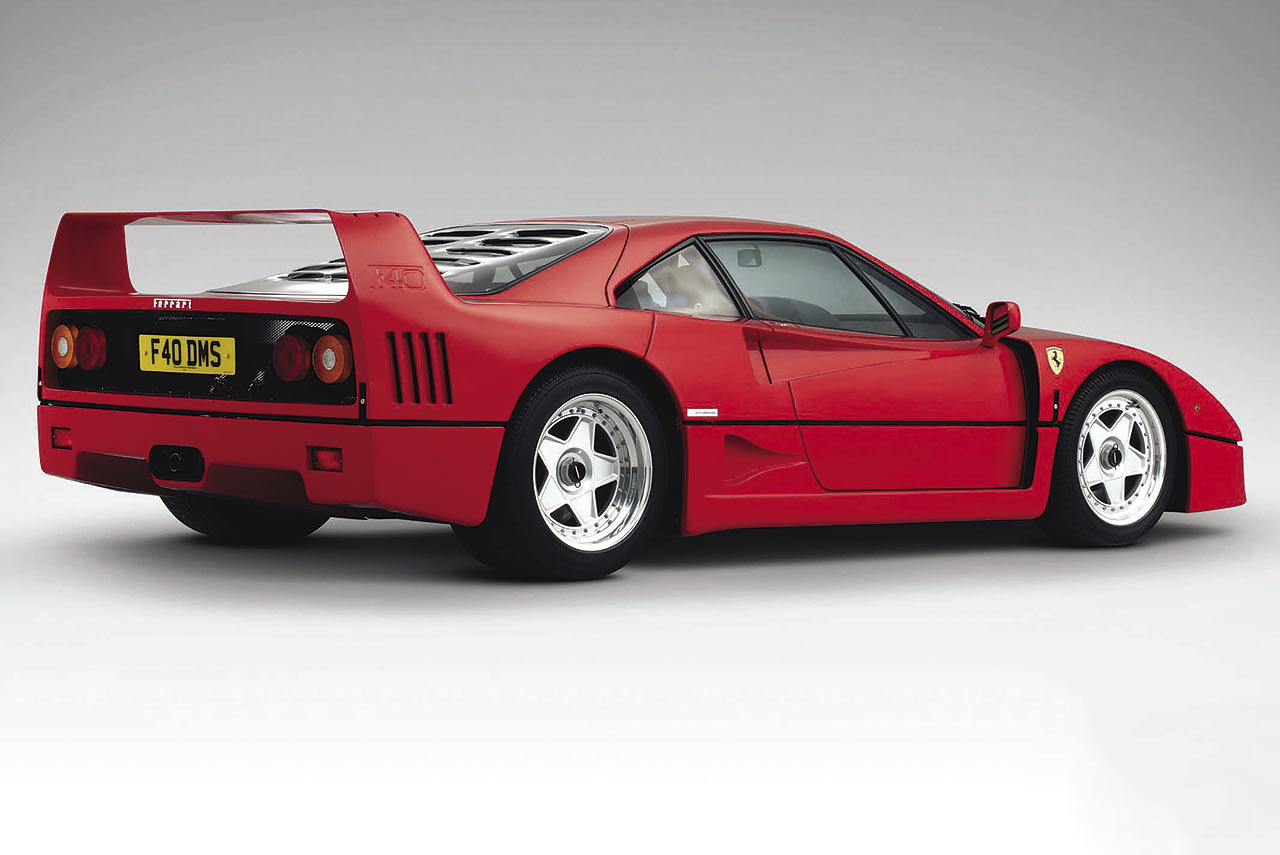
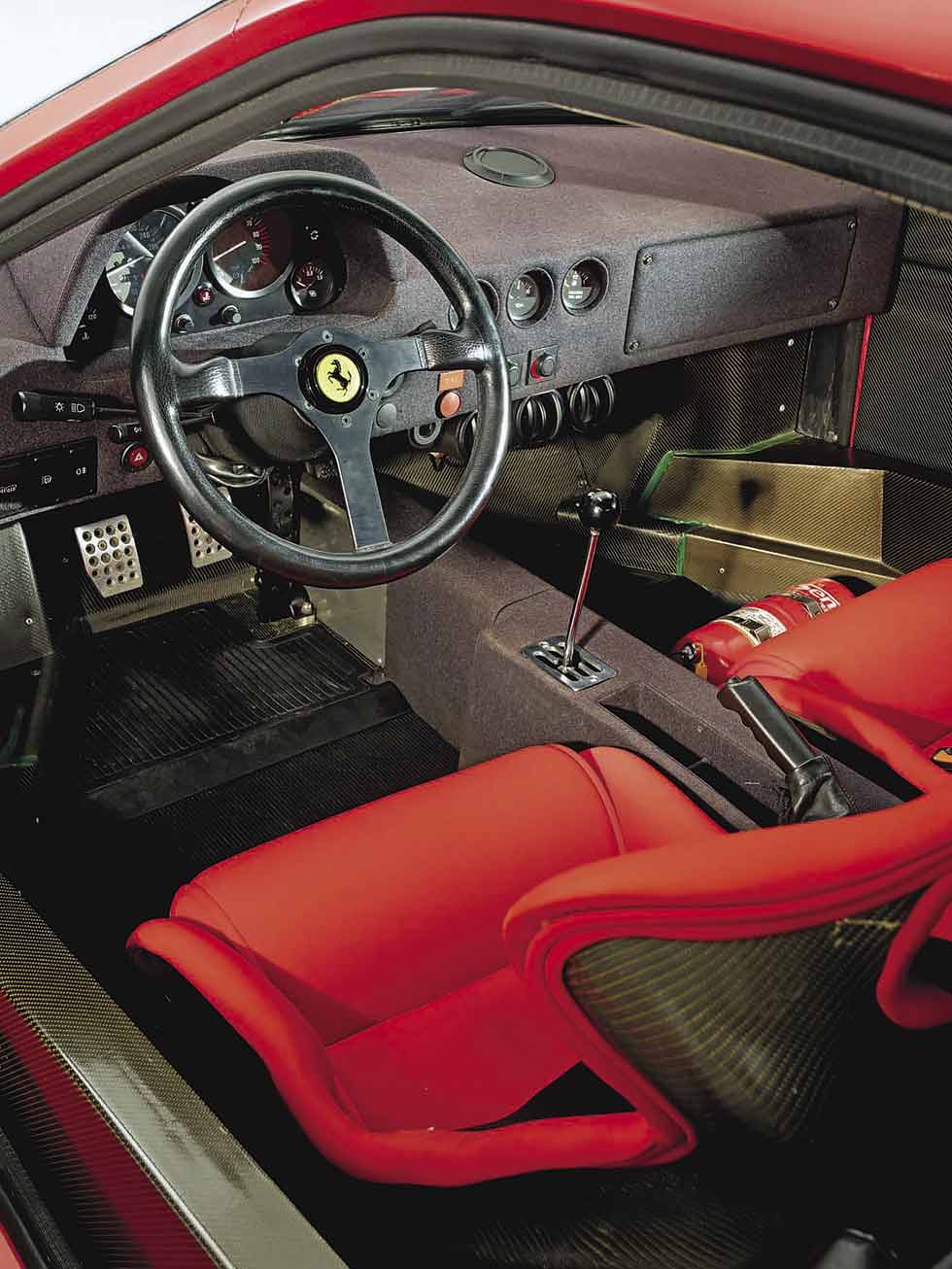
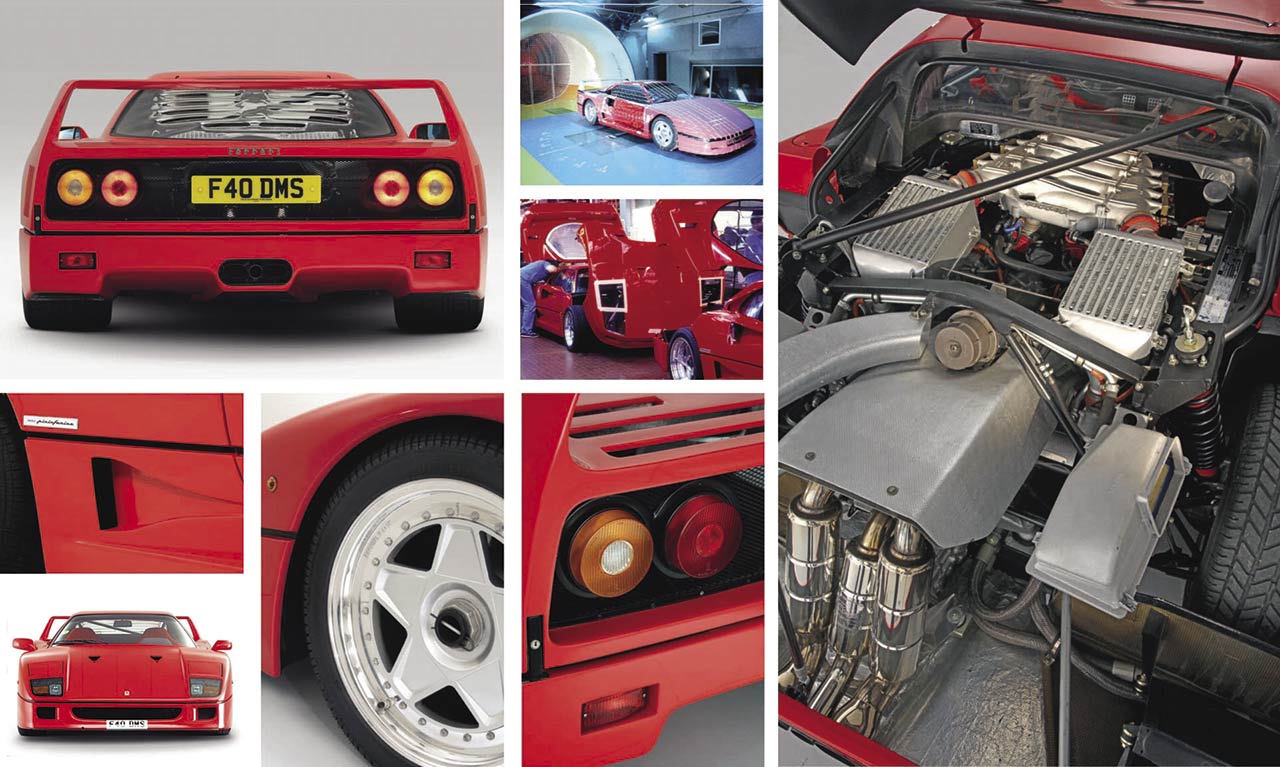
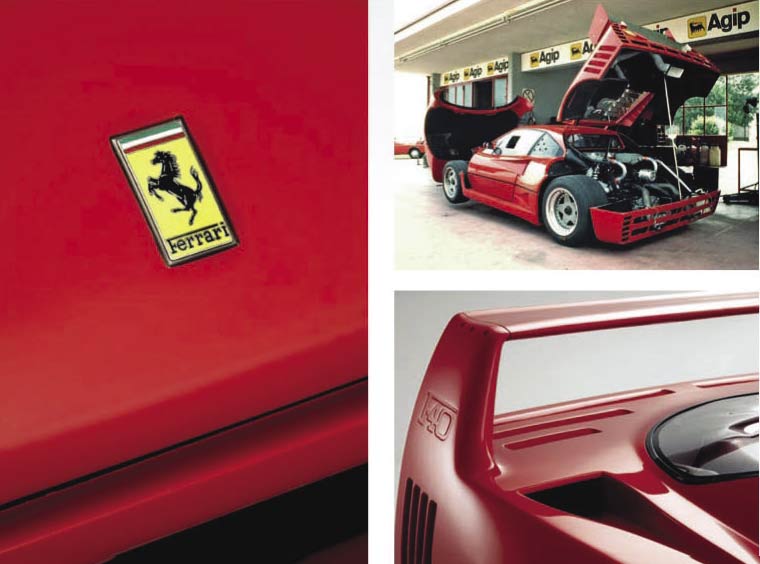
Hypercar Evolution
365GT4 BB 1973-’1976
Maranello’s first true supercar placed a 4391cc flat-12 (in reality, a flattened vee rather than an actual boxer) within an alluring Fioravanti body that combined aluminium, steel and reinforced resin. In 1976, it morphed into the 4943cc 512BB – a car that was lusted after by Gilles Villeneuve. High praise indeed.
Power 380bhp
0-60mph 6.5 secs
Top speed 171mph
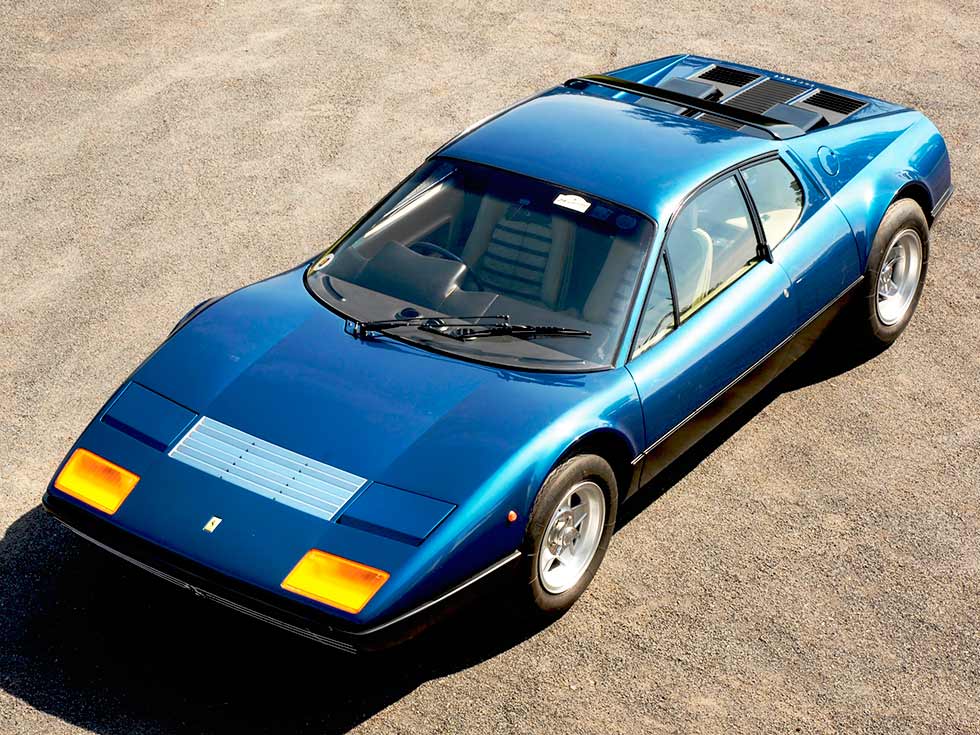
288GTO 1984-’1986
Built in a 272-strong run that was intended to allow the model to compete in Group B, the GTO had to settle for being ‘just’ a road car after the demise of that category. The twin-turbo V8 provided the foundations for the F40, and it’s arguably the best-looking of Maranello’s supercars.
Power 400bhp
0-60mph 4.9 secs
Top speed 189mph
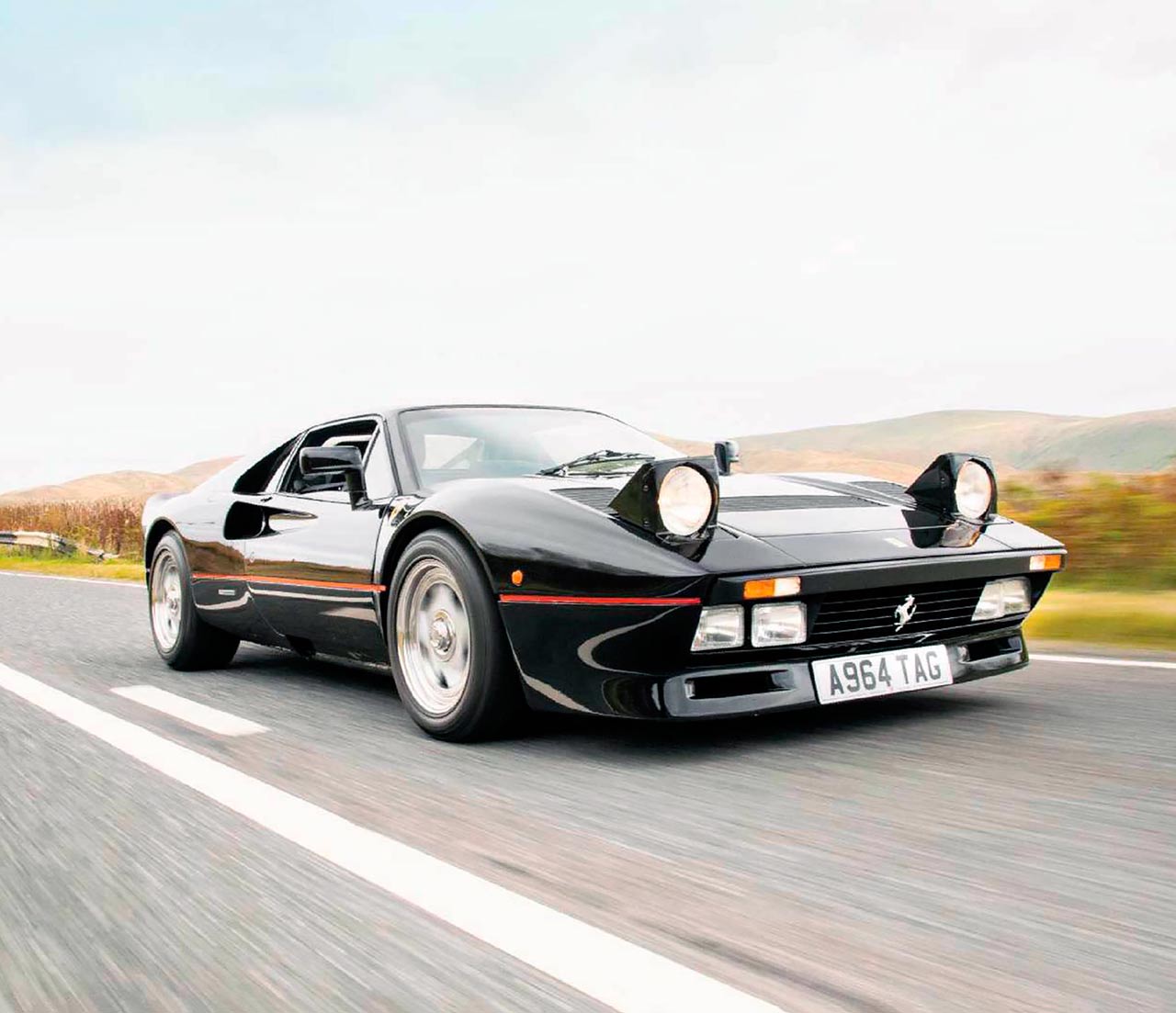
F50 1995-’1997
By the time that the F50 came along, the world had changed thanks to the introduction of the McLaren F1 – the hypercar had arrived. Despite Ferrari working hard to play up the links to its Formula One cars via the V12 and carbonfibre monocoque, the F50 was not warmly received, but values are now strong.
Power 513bhp
0-60mph 3.7 secs
Top speed 202mph
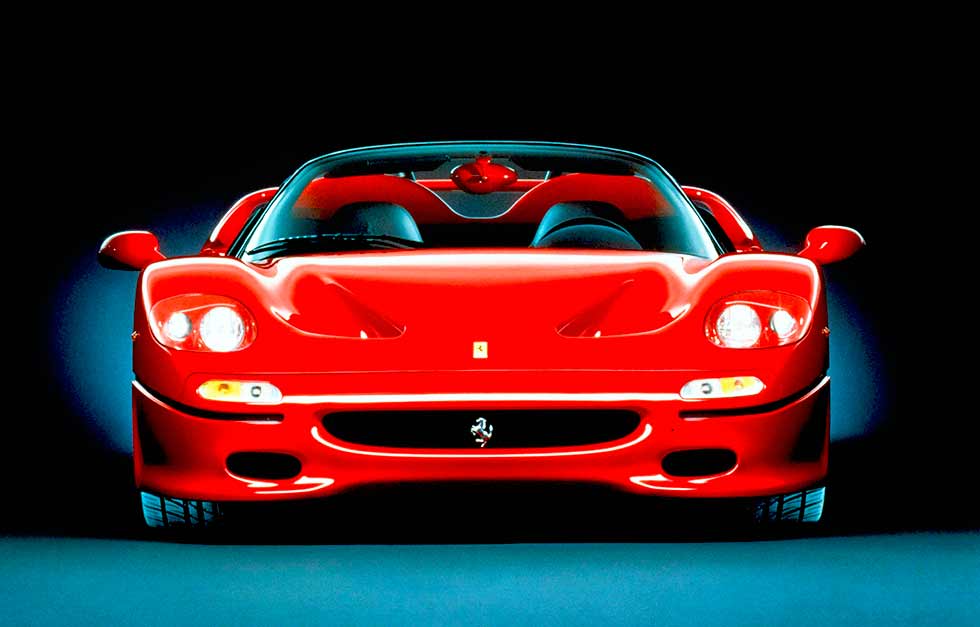
Enzo 2002-’2005
Both on-track and off, Ferrari was in a rich vein of form during the early 21st century. The Enzo featured carbon-ceramic brakes, paddle-shift transmission, clever underbody aerodynamics and a storming V12, while its electronic whizzkiddery enabled mere mortals to access its huge performance.
Power 650bhp
0-60mph 3.5 secs
Top speed 217mph
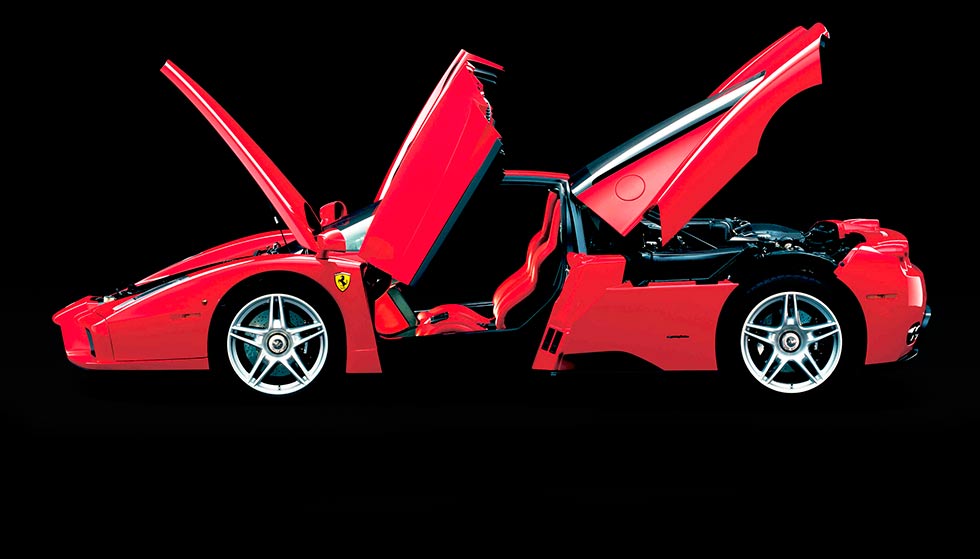
LaFerrari 2013-’2017
Look past the pretentious name and you’ll discover that ‘The Ferrari’ borrows from F1 by combining an internal-combustion engine (in this case, a 6.3-litre V12) with hybrid KERS technology. The latter adds 160bhp to an already healthy 790bhp. By no means beautiful, but searingly fast.
Power 950bhp
0-60mph 2.4 secs
Top speed 217mph
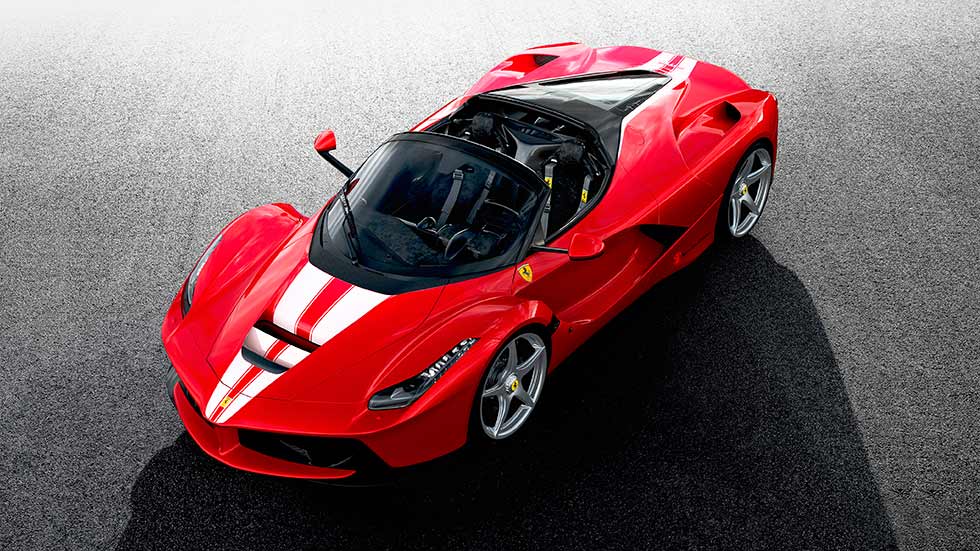
RIGHT PLACE, WRONG TIME
A Ferrari for road or track? A competition car for the street, the F40 eventually shone in motorsport. Although the Ferrari F40 became a revered road car, says James Page, circumstances conspired against it for competition success. Photography LAT.
During the second half of the 1980s, GT racing was very much in the doldrums, international events having become the domain of Group C prototypes. The upshot was that Ferrari had a brand-new car that should have been ideally suited to motorsport, but there were few series in which it could participate. Undeterred, folk soon began to enquire about a competition-spec F40, with Daniel Marin – from renowned Ferrari dealer Charles Pozzi – persuading the company to let Michelotto build it for use in the American IMSA GTO series. Formula One star Jean Alesi gave the F40 LM its on-track debut at Laguna Seca on 15 October 1989. Entered by Jean Sage’s Ferrari France équipe, it finished third behind the two Audis of Hans Stuck and Hurley Haywood. The following week, Jean-Pierre Jabouille drove the same car at Del Mar but was forced to retire. As an aside, Alesi would join the Ferrari F1 team for ’1991 and – at the urging of Nelson Piquet – managed to negotiate a roadgoing F40 into his contract.
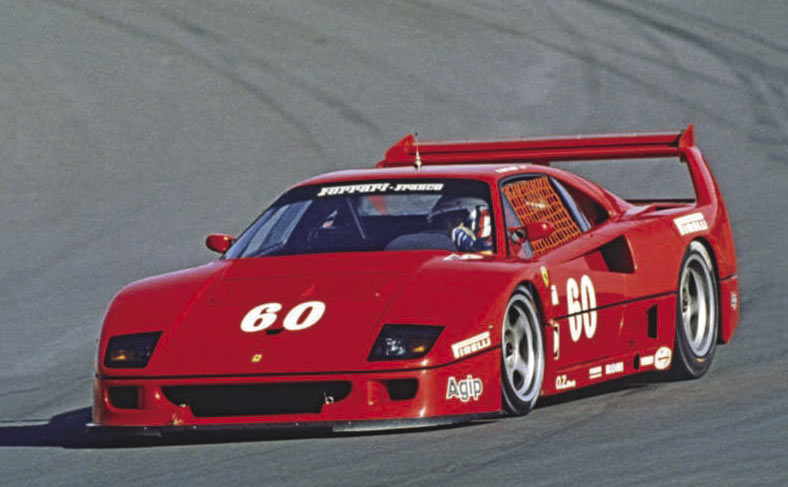
A total of 19 LMs eventually left Maranello, but not many of those were actually raced. The car featured a strengthened chassis, uprated aerodynamics that included a front splitter and adjustable rear wing, competition brakes and transmission, plus wider wheels.
Power was raised to 700bhp via increased boost, bigger intercoolers, a higher compression ratio and a new injection system, while weight was brought down to just over 1000kg.
Shortly after F40 production had come to an end, prototype racing imploded and GTs once more came to the fore. For the 1993 season, Michelotto converted seven more cars to CSAIGT specification for use in domestic series.
Boasting, among other modifications, a 590bhp engine, LM brakes, a lighter body and a lower ride height, they enjoyed reasonable success. Chassis 80742 won the 1993 Campionato Italiano Supercar GT series.
The BPR Global GT Series was launched in 1994, giving the F40 an international outlet. Bo Strandell entered one for Luciano Della Noce and Anders Olofsson, and they took victory in the Vallelunga 4 Hours plus a second at Spa. Although the F40 was further upgraded into the GT-Evoluzione, by 1995 a new rival had appeared. The irony was that the Ferrari had long been viewed as a racing car for the road, and it was finally put in its place by a road car that was never intended to race. Gordon Murray was adamant that his McLaren F1 shouldn’t be used in competition, but he was eventually worn down by privateers Ray Bellm and Thomas Bscher.
In many ways – on both road and track – the British hypercar ushered in a new era. It won first time out at Le Mans in 1995, although the ageing F40 sneaked a victory at Anderstorp that year courtesy of Michel Ferté and Olivier Thévenin. Amazingly, Olofsson and Della Noce repeated that result in ’1996, leading home a quartet of McLarens. It was a well-deserved last hurrah for the Ferrari, almost 10 years after it had first been unveiled.


